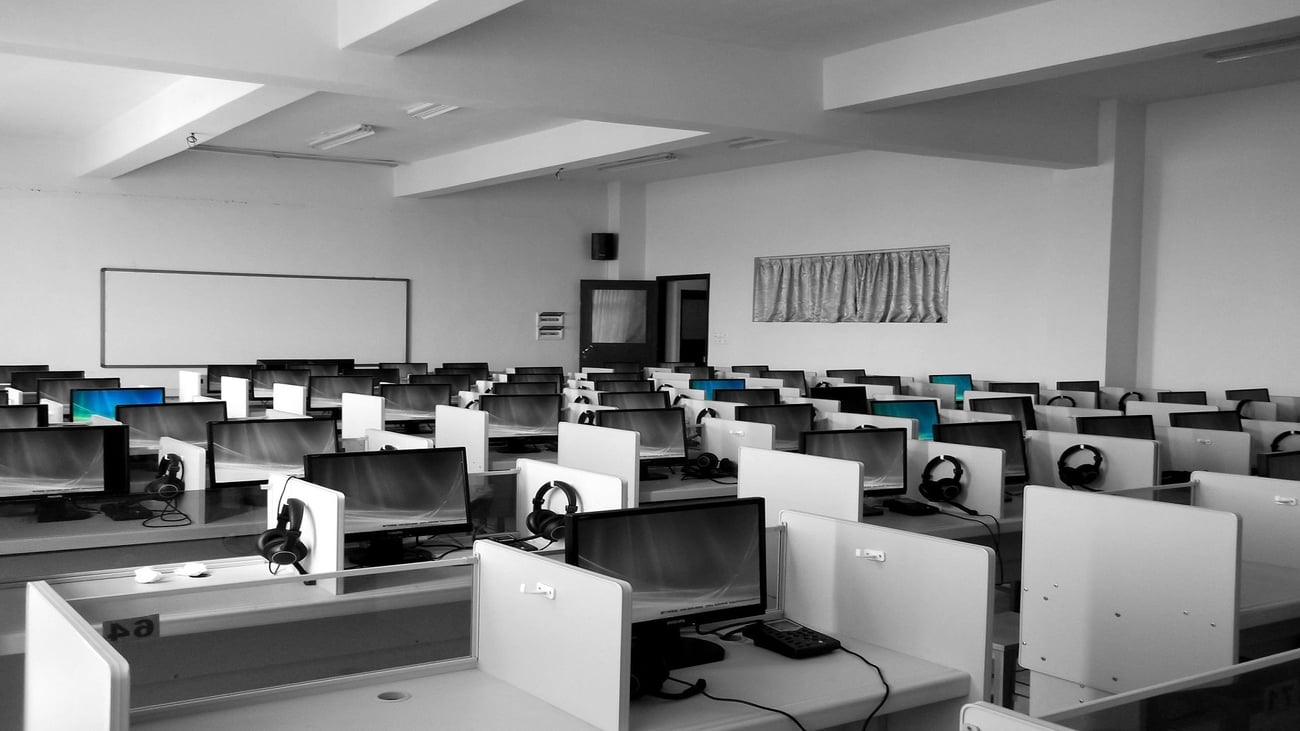
We might have just celebrated the introduction of a 40-hour working week way back in 1900, but the traditional clock-on, clock-off office where we all work from nine to five, five days a week, seems almost as ancient. Today’s go-getters are putting in much longer hours, and with increases in automation, a huge range of technologies available and information at our fingertips, our ‘nine to fives’ are set to evolve even more rapidly.
Let’s see how technology will impact the 2027 workspace.
Virtual workplaces
While a physical space will still be central to most workplaces, imagine if you could train on the job without worrying about workplace safety? Test out different scenarios with virtual customers, practice presentations in front of virtual audiences, or let candidates “trial” in a workspace as part of the recruitment process.
An even healthier option than a standing desk would be a virtual one, where you can use hand gestures to open emails, use “3D” objects in your presentations instead of slides, or collaborate with colleagues across the world via virtual meeting rooms. Live-streaming is going to get a whole lot easier, so you can imagine teambuilding exercises in a 360-degree, virtual reality world.
Smart employees
Already there are stories of companies in the US, Belgium and Sweden microchipping employees via implants under the skin that enable staff to unlock secure doors, pay for their meals in the cafeteria and use the photocopier. While these are just RFID tags with no tracking ability, that could well change to measuring productivity, behaviour or other individual markers. That may be a step too far for some, but biometrics may well go beyond retinal scanners or thumbprints in future. While separating people from their irises or fingers is certainly a vast level of difficulty above swipe card theft, mimicking someone’s walk, breathing patterns or biometric imprint is a whole lot harder still.
The future on 5G
While some smart devices like connected TVs and fridges are already available, platforms like SmartThings Cloud that integrate everything from office lights to phones and computers, will be made possible with 5G, bringing smart tech to the masses. Accessibility to a whole raft of smart devices will be made cheaper and easier than ever before.
With an array of small devices and appliances all connected via 5G – touted to be around 50 billion of them – 5G will not just bring superfast data speeds to your smartphone, but enable your high-speed self-driving car to find an available carpark to get you to your work meeting on time. Every project you work on would automatically save to the cloud, and be used on any device – and you wouldn’t need minutes for the meeting, because everyone could virtually relive it.
Theoretically, productivity will be higher, as the delay involved in waiting for big documents to download or send would be a thing of the past. Connectivity should ensure everyone is accessible, massively improving work safety. And if someone keeps eating your lunch from the work fridge, thanks to image recognition, you could always ask the fridge who did it.
AI assistants
We’re just now getting used to our voice-activated assistants like Bixby, but the future is going to get a lot more Star Trek. Integration between all our devices will be so seamless we won’t even notice. We’ll be able to talk to our computers, projector screens and televisions, and image and voice recognition will give us customised preferences without our having to ask, just like the perfect butler. Think coffee makers that know your preferences, voice-activated lightbulbs and speakers that remember you hate loud music during morning meetings mornings, but crank it up throughout the day.
While Internet of Things is one thing, Intelligence of Things is the next step. Recently, UK news agency Press Association announced that it would be using robots to create 30,000 local news reports every month. The bots can write news stories based on the sort of spreadsheets and data sets that make most humans’ eyes glaze over, and tailor them for different regions. It frees up human reporters to focus on more emotive or investigative journalism – and to choose the appropriate datasets.

Technology timeouts
New Zealanders personal and work lives have never been closer. There’s no doubt that technology is a great enabler and gives us access to information but the challenge for business owners, management and workers is finding work/life balance. Both software and hardware developers will likely work together to enable people to place self-imposed restrictions on their devices giving them more control and ensuring they have a healthy work/life balance.
In the future, technology will play a critical role in the success of people’s work lives. Technology and innovation improve productivity and while our ‘nine to fives’ will never be ‘nine to noons’, new developments will help make our jobs work better for us.




